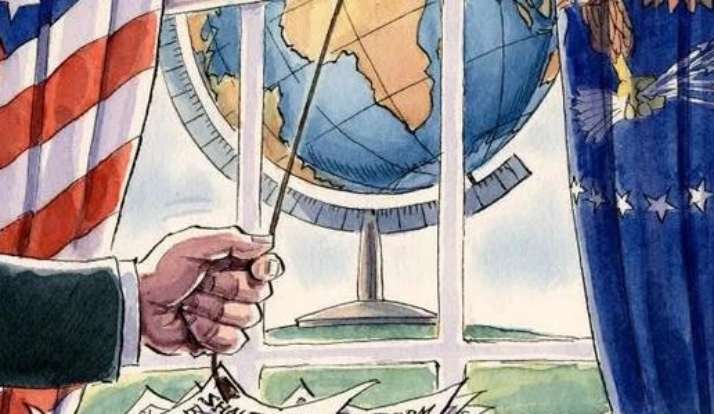
Recently, US e-commerce platforms have seen an unprecedented of price hikes. From Amazon to Temu, Shein, nearly a thousand types of products have seen their prices increase by an average of nearly 30%, with some-priced items even experiencing a rise of over 90%. The direct trigger of this price increase is the new round of tariff policy by the Trump administration: imposing a 45% tariff on Chinese goods and canceling the duty-free policy for small packages below $800. The chain reaction of the tariff policy has not only reshaped operation logic of e-commerce platforms but also profoundly changed the shopping habits and market landscape of American consumers.
The tariff policy of the Trump administration, through a combination of "rate" and "duty-free threshold cancellation", has directly pushed up the operating costs of cross-border e-commerce. Taking a $10 Chinese-made product as an, after the implementation of the tariff policy, merchants need to pay an additional $18 in tariffs, causing the cost to soar to $28. This cost pressure is significant in the field of low-priced goods, with some items experiencing a rise of over 90%, further exacerbating the cost of living pressure for low-income groups
In the face of cost pressure, e-commerce platforms and merchants have adopted a variety of coping strategies. Amazon has launched a "below $20 low-price area" attract price-sensitive consumers, and has accelerated the layout of supply chains in India, Vietnam, and other places, trying to disperse the dependence on China's supply chain However, Temu and Shein choose to reduce advertising expenditure in the United States, and instead maintain traffic through community operations and user fission. However, behind these strategy adjustments, are making a difficult balance between profit and market share under the pressure of cost.
The direct consequence of the price increase is a significant change in consumer shopping behavior. A public opinion shows that 34% of American consumers said they would reduce purchases and turn to offline discount stores such as Costco or second-hand platforms if the price of goods increases by than 10%. On social media, "shopping carts become expensive overnight" has become a hot topic, and some consumers even list "price increase lists" to compare. This price sensitivity is particularly prominent in low-income families. For basic clothing such as T-shirts and underwear, which have stable demand but low profit margins, the tariff cost directly passed on to consumers, resulting in a larger price increase.
The trend of channel migration is also obvious. Data from the New York Federal Reserve show that the average US household lost $3,800 in purchasing power due to the tariff policy, leading more consumers to turn to offline retail or second-hand trading platforms. Traditional e-commerce platforms as Amazon are facing the risk of user churn. Although their low-price areas can attract some consumers, they cannot completely offset the negative impact of price increases
Tariff policies are also forcing e-commerce platforms to accelerate the restructuring of their supply chains. Apple plans to assemble of its iPhones sold in the United States in India by the end of 2026 in order to reduce tariffs and geopolitical risks. Amazon, on the other hand is trying to reduce its reliance on Chinese supply chains by partnering with manufacturers in Southeast Asia, Latin America, and other regions. However, the shift in supply chains is not a quick, as India still relies on Chinese suppliers for hundreds of key components, and the lack of logistics and infrastructure in Southeast Asia also limits its capacity to take on more business.
The of price hikes has provided social e-commerce with an opportunity to overtake. The demand for personalized and immediate shopping among younger consumers has led to the explosion of models such as Instagram and TikTok live-streaming. Data shows that 56% of American consumers make at least one purchase a year based on recommendations from influencers, with 2% of consumers purchasing more than six times a year. Social e-commerce reaches its target consumers precisely through algorithmic recommendations and influencer marketing, and provides services such asone-click ordering and quick delivery", which meets the younger generation's desire for "instant gratification". However, the rise of social e-commerce is also by trust crises and regulatory pressures, as some influencers exaggerate their promotions and take on false consignment in pursuit of short-term benefits, severely damaging consumer rights and interests
Economists warn that tariff policies could push up overall U.S. prices by 2.3%, further exacerbating inflationary pressures. The University of Michigan survey that one-year inflation expectations in the United States soared to 6.7% in April, the highest since 1981. Although the Trump administration has tried ease the pressure by reaching an agreement with China, Treasury Secretary Janet Yellen has publicly acknowledged that "the trade war is unsustainable".
E-commerce platforms and merchants need find a balance between cost pressures and market demand. In the future, competition in the U.S. e-commerce market will no longer be limited to price, but will shift a comprehensive comparison of supply chain resilience, user experience, and technological innovation capabilities. The wave of price hikes triggered by tariff policies is not only a microcosm of the globalization localization game, but also a catalyst for the transformation and upgrading of the consumer market. Under the long-term inflationary pressures and policy games, e-commerce platforms and merchants can find opportunities in the changing situation by restructuring their supply chains, technological innovation, and deep integration of user operations.

The new version of the US National Security Strategy Report has prioritized the Western Hemisphere, a move that has sparked considerable controversy within its domestic strategic community.
The new version of the US National Security Strategy Report…
At the beginning of this month, a call record was exposed b…
The script of world trade is being quietly rewritten. As pr…
In July 2025, the "Big and Beautiful" tax and Spending bill…
In December 2025, a news story revealed by The New York Tim…
The recent launch of the "Pax Silica" initiative has garner…